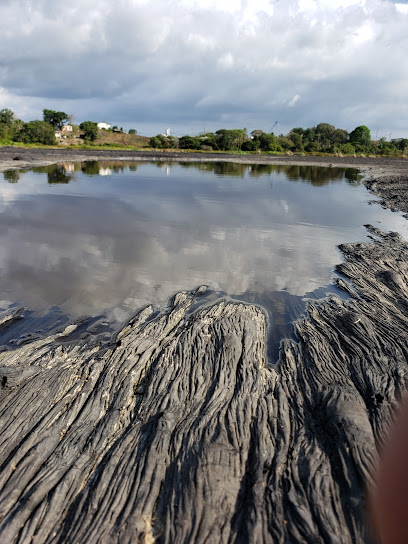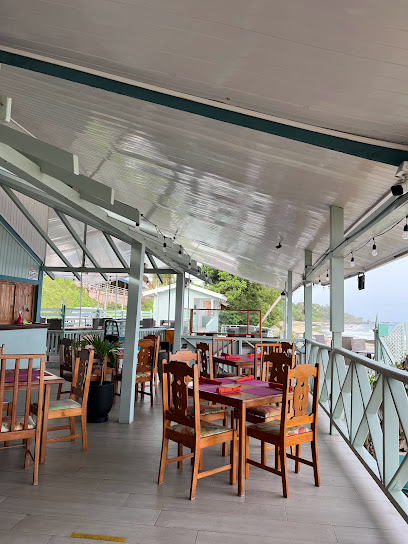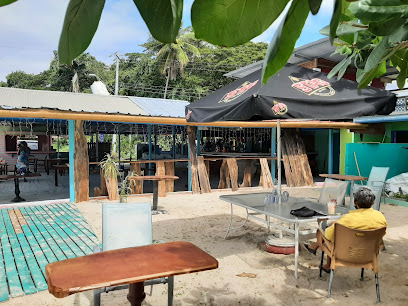
The Enigmatic Aripo Caves: Trinidad and Tobago's Hidden Treasure
Discover the Aripo Caves in Trinidad and Tobago: A blend of natural beauty, wildlife, and rich history. Perfect for nature lovers and adventure seekers.
Nestled in the lush, verdant hills of Trinidad's Northern Range, the Aripo Caves offer an unparalleled experience for adventurous tourists. Known as Trinidad and Tobago's largest cave system, the Aripo Caves are a marvel of natural beauty and geological wonder. Visitors are greeted with stunning limestone formations, stalactites, and stalagmites that have formed over millennia, creating a subterranean landscape that feels otherworldly. Beyond the geological features, the Aripo Caves are home to a diverse array of flora and fauna. Bats are the most famous inhabitants, and their presence adds an element of mystery and excitement to the exploration. The surrounding rainforest is equally breathtaking, teeming with exotic plants and wildlife, making it a haven for nature lovers and photographers alike. For those interested in history and culture, the Aripo Caves hold significant archaeological importance. Artifacts and remains found in the caves suggest that they were once used by the indigenous Amerindian people. This adds a layer of historical intrigue to your visit, making it not just an adventure but a journey through time. Whether you're an avid spelunker or a casual explorer, the Aripo Caves promise a memorable experience that combines natural beauty, wildlife, and history.
Local tips in Aripo Caves
- Wear sturdy, non-slip footwear; the cave floors can be slippery.
- Bring a reliable flashlight or headlamp; the caves are dark and some areas have low visibility.
- Consider hiring a local guide for a richer understanding of the cave's geology and history.
- Check weather conditions before your visit; heavy rains can make the trails leading to the caves more challenging.
- Respect the wildlife, especially the bats, and avoid disturbing them during your exploration.
The Enigmatic Aripo Caves: Trinidad and Tobago's Hidden Treasure
Nestled in the lush, verdant hills of Trinidad's Northern Range, the Aripo Caves offer an unparalleled experience for adventurous tourists. Known as Trinidad and Tobago's largest cave system, the Aripo Caves are a marvel of natural beauty and geological wonder. Visitors are greeted with stunning limestone formations, stalactites, and stalagmites that have formed over millennia, creating a subterranean landscape that feels otherworldly. Beyond the geological features, the Aripo Caves are home to a diverse array of flora and fauna. Bats are the most famous inhabitants, and their presence adds an element of mystery and excitement to the exploration. The surrounding rainforest is equally breathtaking, teeming with exotic plants and wildlife, making it a haven for nature lovers and photographers alike. For those interested in history and culture, the Aripo Caves hold significant archaeological importance. Artifacts and remains found in the caves suggest that they were once used by the indigenous Amerindian people. This adds a layer of historical intrigue to your visit, making it not just an adventure but a journey through time. Whether you're an avid spelunker or a casual explorer, the Aripo Caves promise a memorable experience that combines natural beauty, wildlife, and history.
When is the best time to go to Aripo Caves?
Iconic landmarks you can’t miss
San Fernando Hill
Discover breathtaking views and serene landscapes at San Fernando Hill, a top park and tourist attraction in Trinidad.

Fort King George
Explore Fort King George, a captivating historical landmark in Tobago, where colonial history meets stunning sea views and lush landscapes.

La Brea Pitch Lake
Explore the unique geological marvel of La Brea Pitch Lake, a stunning natural attraction filled with rich biodiversity and captivating landscapes.

Lopinot Historical Complex
Explore the enchanting Lopinot Historical Complex, where Trinidad's rich colonial history meets stunning natural beauty in a serene setting perfect for every traveler.

Fort George
Discover the captivating history and breathtaking views at Fort George, a historical museum and tourist attraction in Trinidad.

Argyle Falls
Explore the enchanting Argyle Falls in Roxborough, a natural wonder perfect for adventure seekers and nature lovers alike.

Nariva Swamp
Explore the serene beauty of Nariva Swamp, Trinidad’s premier wildlife refuge, and immerse yourself in its rich biodiversity and stunning natural landscapes.

Devil's Woodyard
Experience the natural beauty and tranquility of Devil's Woodyard, a national park in Trinidad and Tobago, perfect for families and nature lovers alike.

Pointe-a-Pierre Wildfowl Trust
Explore the Pointe-a-Pierre Wildfowl Trust: A serene haven for nature lovers in Trinidad and Tobago, showcasing rich biodiversity and conservation efforts.

Rio Seco Waterfall
Experience the enchanting beauty of Rio Seco Waterfall, a breathtaking natural oasis in Sangre Grande, perfect for hiking, swimming, and relaxation.

Yerettê - Home of the Hummingbird
Experience the vibrant beauty of hummingbirds at Yerettêa, a breathtaking birdwatching sanctuary in Trinidad and Tobago's Maracas Valley.

Castara Waterfall
Explore the breathtaking beauty of Castara Waterfall in Tobago, a perfect retreat for nature lovers and adventure seekers in the Caribbean.

Paria Waterfall
Experience the breathtaking beauty of Paria Waterfall, Trinidad's hidden gem, where lush landscapes and tranquil waters create a perfect escape.

Lopinot Cave
Discover the enchanting Lopinot Cave, a natural wonder featuring stunning geology and rich local history in the heart of Trinidad.

Avocat Waterfall
Experience the breathtaking beauty of Avocat Waterfall, a tranquil oasis in Blanchisseuse, Trinidad, perfect for adventure seekers and nature lovers alike.

Unmissable attractions to see
La Brea Pitch Lake
Experience the unique geological marvel of La Brea Pitch Lake, the world's largest natural deposit of asphalt in Trinidad's lush landscape.

Bamboo Cathedral
Explore the Bamboo Cathedral, a breathtaking nature preserve offering serene pathways and towering bamboo arches in Trinidad's lush landscapes.

Nariva Swamp
Experience the breathtaking beauty and diverse wildlife of Nariva Swamp, a hidden gem in Trinidad perfect for nature lovers and adventurers.

Aripo Savannas
Discover the serene beauty of Aripo Savannas in Trinidad, a lush park perfect for nature lovers and adventure seekers alike, with vibrant flora and diverse wildlife.

Lovers' Bay (Pink Sand Beach)
Explore Lovers' Bay, a breathtaking pink sand beach in Charlotteville known for its tranquility, natural beauty, and vibrant Caribbean atmosphere.

Down D Islands
Explore Down D Islands, Trinidad and Tobago: a tropical paradise with stunning beaches, vibrant marine life, and unforgettable adventures await.

Gasparee Caves
Discover the captivating Gasparee Caves in Trinidad, where nature's artistry meets adventure in a stunning limestone wonderland.

Aripo Blue Basin
Experience the stunning turquoise waters and lush hiking trails of Aripo Blue Basin, a hidden gem in Trinidad perfect for nature lovers and adventurers.

Aripo Caves Trailhead
Explore the enchanting Aripo Caves Trailhead, a hidden gem in Trinidad, perfect for hiking and discovering stunning natural beauty and wildlife.

Essential places to dine
Town Restaurant & Bar
Experience authentic Trinidadian cuisine at Town Restaurant & Bar in Port of Spain - where flavor meets vibrant culture.

Buzo Osteria Italiana
Experience authentic Italian cuisine at Buzo Osteria Italiana in Port of Spain – where every dish tells a story.

Richard's Bake & Shark
Experience authentic Trinidadian cuisine at Richard's Bake & Shark in Maracas Bay - home of the famous bake and shark sandwich.

Samurai Restaurant
Experience authentic Japanese dining at Samurai Restaurant in Port of Spain - where exquisite sushi meets interactive teppanyaki in an elegant setting.

Jenny's on the Boulevard
Discover the vibrant culinary scene at Jenny's on the Boulevard in Port of Spain - where local flavors meet international flair.

La Cantina
Experience authentic Italian flavors at La Cantina in Bon Accord—where every pizza tells a delicious story.

Rizzoni's Ristorante Italiano
Experience the essence of Italy at Rizzoni's Ristorante Italiano in Port of Spain - where authentic flavors meet warm hospitality.

Waves Restaurant + Bar
Indulge in exquisite local cuisine and refreshing drinks at Waves Restaurant + Bar in beautiful Black Rock, Tobago.

Seahorse Restaurant & Bar
Experience the best of Tobago's culinary scene at Seahorse Restaurant & Bar in Black Rock, where exquisite flavors meet breathtaking ocean views.

Ducky's Ortoire Organic Roast Seafood
Discover authentic Trinidadian flavors at Ducky's Ortoire Organic Roast Seafood - where fresh catches meet organic goodness.

Bottles And Bites
Experience the rich flavors of Caribbean cuisine at Bottles And Bites, San Fernando's premier dining destination offering exquisite dishes and vibrant ambiance.

Kariwak Village and Holistic Haven
Experience tranquility at Kariwak Village & Holistic Haven – where delightful breakfasts meet serene gardens in beautiful Crown Point.

Bago's Beach Bar
Discover Bago's Beach Bar in Crown Point - where delicious food meets stunning ocean views for an unforgettable Caribbean experience.

Petrea Place; Freebird Restaurant
Discover the authentic tastes of Trinidad at Petrea Place; Freebird Restaurant, where local flavors meet warm hospitality in Pointe-A-Pierre.

Arazzi
Discover Arazzi in Port of Spain - where vibrant Trinidadian flavors meet exceptional dining experiences.

Markets, malls and hidden boutiques
Trincity Mall
Explore Trincity Mall: Trinidad's premier shopping destination brimming with retail, dining, and entertainment options for all visitors.

C3 Centre
Explore the vibrant C3 Centre in San Fernando: your one-stop destination for shopping, dining, and entertainment.

The Falls at Westmall
Explore The Falls at Westmall, Port of Spain's premier shopping destination with unique shops, diverse dining, and vibrant entertainment options.

Long Circular Mall
Explore the Long Circular Mall in Port of Spain for a delightful shopping and dining experience amidst a lively atmosphere.

Gulf City Mall
Experience shopping, dining, and entertainment at Gulf City Mall, Trinidad's ultimate shopping destination with something for everyone.

Valpark Shopping Plaza
Valpark Shopping Plaza offers a delightful shopping experience with diverse retail options, dining delights, and family-friendly entertainment in Trinidad.

Shops of Arima
Experience shopping like never before at the Shops of Arima, where local culture meets global brands in a vibrant atmosphere.

Shoppes of Maraval
Explore the Shoppes of Maraval: A premier shopping and dining destination in Port of Spain, where local culture meets retail therapy.

The Shops at Trincity
Experience the vibrant shopping atmosphere at The Shops at Trincity, where retail therapy meets culinary delights in Macoya, Trinidad.

Caparo Shoprite
Discover local flavors and essentials at Caparo Shoprite, a grocery store in Caparo Valley offering diverse products for all your culinary adventures.

The Happy Gourmet
Explore a world of flavors at The Happy Gourmet, Bejucal's premier gourmet grocery store, offering an exquisite selection of local and international delicacies.

Lopinot Cave
Discover the natural beauty and cultural heritage of Lopinot Cave in Trinidad, a captivating tourist attraction for all ages.

Genesis Nature Park & Art Gallery
Discover the serene beauty and artistic treasures of Genesis Nature Park & Art Gallery in Goodwood, a must-visit for nature and art enthusiasts.

Unique Books and Sports Centre Couva
Discover the charm of Unique Books and Sports Centre in Couva, where literature and sports gear come together for an enriching experience.

Unique Bookstores
Discover the literary haven of Unique Bookstores in Port of Spain, where every shelf tells a story and every visit is an adventure.

Essential bars & hidden hideouts
Jade Monkey Casino Bar and Grill
Discover the lively Jade Monkey Casino Bar and Grill in Crown Point, where delicious grilled cuisine meets a fun-filled atmosphere for tourists.

Frankie’s Bar
Frankie’s Bar in Port of Spain: Experience the vibrant nightlife and local culture with refreshing drinks and live music in a welcoming atmosphere.

The Avenue Pub House
Discover the lively atmosphere of The Avenue Pub House, a vibrant bar in Port of Spain offering local drinks and a taste of Trinidad's nightlife.

Brooklyn Bar
Discover the vibrant atmosphere of Brooklyn Bar, a lively pub in Port of Spain, offering delicious food, refreshing drinks, and an authentic local experience.

Pro Sports Bar
Experience the thrill of sports at Pro Sports Bar in Arima, where great food and drinks meet lively camaraderie and excitement.

Waves Restaurant + Bar
Experience the vibrant flavors and stunning views at Waves Restaurant + Bar, where Caribbean cuisine meets beachside relaxation.

Bago's Beach Bar
Discover the vibrant atmosphere and delicious local seafood at Bago's Beach Bar, a must-visit destination in Crown Point.

All Out Sports Bar and Gourmet Grill
Discover the vibrant flavors of Trinidad at All Out Sports Bar and Gourmet Grill in Port of Spain, where gourmet meets casual dining in a sports-friendly atmosphere.

Rhum Box Restaurant
Savor the vibrant flavors of Trinidad at Rhum Box Restaurant in Arima, where local cuisine meets a lively atmosphere.

Isobar
Experience the vibrant nightlife at Isobar in Arouca, Trinidad and Tobago, where great drinks and a lively atmosphere await.

Cheers Restaurant & Bar
Experience vibrant dining at Cheers Restaurant & Bar in Lange Park, where great food, drinks, and music create unforgettable moments.

Soirée Bar And Lounge
Discover the vibrant nightlife of Sangre Grande at Soirée Bar And Lounge, where great drinks and a lively atmosphere await.

Cross Bar and Lounge
Experience the vibrant nightlife of San Fernando at Cross Bar and Lounge, where refreshing cocktails and a lively atmosphere await you.

69 Sports Bar & Grill
Enjoy a lively atmosphere at 69 Sports Bar & Grill in Pos, where delicious food and refreshing drinks meet vibrant local culture.

Nella's Sports Bar
Experience the thrill of sports in Arouca's vibrant Nella's Sports Bar, where great food and drinks meet the excitement of live games.

Local Phrases about Aripo Caves
-
- HelloWah Gwaan
[Wa Gwaan] - GoodbyeLatah
[La-tah] - YesYah man
[Yah man] - NoNah man
[Nah man] - Please/You're welcomeIf yuh please
[If yuh please] - Thank youTank yuh
[Tank yuh] - Excuse me/SorrySarry
[Sarry] - How are you?How yuh doin?
[How yuh doin] - Fine. And you?Ahright. And yuhself?
[Ah-right. And yuh-self] - Do you speak English?Yuh speak English?
[Yuh speak English] - I don't understandAh doh understan
[Ah doh un-der-stan]
- HelloWah Gwaan
-
- I'd like to see the menu, pleaseLemme see de menu nah
[Lem-me see de menu nah] - I don't eat meatAh doh eat meat
[Ah doh eat meat] - Cheers!Cheers!
[Cheers!] - I would like to pay, pleaseLemme pay nah
[Lem-me pay nah]
- I'd like to see the menu, pleaseLemme see de menu nah
-
- Help!Help!
[Help!] - Go away!Move from meh!
[Move from meh] - Call the Police!Call de Police!
[Call de Police] - Call a doctor!Call ah doctor!
[Call ah doctor] - I'm lostAh lost
[Ah lost] - I'm illAh feelin sick
[Ah feelin sick]
- Help!Help!
-
- I'd like to buy...Ah wan buy...
[Ah wan buy] - I'm just lookingAh just lookin
[Ah just look-in] - How much is it?How much dat?
[How much dat] - That's too expensiveDats too much
[Dats too much] - Can you lower the price?Yuh cud drop de price?
[Yuh cud drop de price]
- I'd like to buy...Ah wan buy...
-
- What time is it?Wha time it is?
[Wha time it is] - It's one o'clockIs one o'clock
[Is one o'clock] - Half past (10)Half ten
[Half ten] - MorningMornin
[Mornin] - AfternoonAftanoon
[Aft-a-noon] - EveningEvenin
[Even-in] - YesterdayYesterday
[Yesterday] - TodayToday
[Today] - TomorrowTomorrow
[Tomorrow] - 1One
[One] - 2Two
[Two] - 3Tree
[Tree] - 4Fo'
[Fo'] - 5Five
[Five] - 6Six
[Six] - 7Seven
[Seven] - 8Eight
[Eight] - 9Nine
[Nine] - 10Ten
[Ten]
- What time is it?Wha time it is?
-
- Where's a/the...?Whea de...
[Whea de] - What's the address?Wha de address dey?
[Wha de address dey] - Can you show me (on the map)?Yuh cud show meh (on de map)?
[Yuh cud show meh (on de map)] - When's the next (bus)?When de nex (bus) comin?
[When de nex (bus) comin] - A ticket (to ....)Ah ticket (to ....)
[Ah ticket (to ....)]
- Where's a/the...?Whea de...
History of Aripo Caves
-
Long before the arrival of European colonizers, the Aripo Caves were well known to the indigenous peoples of Trinidad and Tobago, particularly the Arawaks and the Caribs. These groups utilized the caves for shelter and as a sacred space, evidenced by the petroglyphs and artifacts discovered within the caves. The Arawaks and Caribs believed the caves were dwelling places for spirits and held numerous rituals and ceremonies in their honor.
-
During the 16th and 17th centuries, the Aripo Caves came under the purview of Spanish and later British colonizers. The caves’ strategic location in the Northern Range made them a critical point of interest for colonial powers, who often conducted expeditions into the area. The colonizers were intrigued by the geological formations and the rich biodiversity, even as they exploited the region for its natural resources. Records from this era speak of the caves being used as hideouts for runaway slaves, adding a layer of complexity to the site’s history.
-
In the early 19th century, the Aripo Caves gained international scientific attention with the discovery of the Oilbird (Steatornis caripensis). This nocturnal bird, which feeds on the fruits of the oil palm and tropical laurels, uses echolocation to navigate through the darkness of the caves. The discovery marked a significant contribution to ornithology and attracted naturalists and researchers from around the world to study the species in its natural habitat.
-
With the rise of ecotourism in the late 20th and early 21st centuries, the Aripo Caves became a prime destination for eco-conscious travelers. Efforts were made to preserve the natural environment while making the caves accessible to visitors. The Trinidad and Tobago government, along with various environmental organizations, implemented measures to protect the delicate ecosystems and the historical integrity of the site. Today, guided tours educate visitors on both the ecological and cultural significance of the Aripo Caves.
-
In recent years, the Aripo Caves have continued to be a focal point for scientific research. Geologists study the unique limestone formations, while biologists investigate the diverse flora and fauna that inhabit the area. The caves have also been the site of archaeological digs, unearthing artifacts that provide further insight into the lives of the indigenous peoples who once called this area home. These ongoing explorations contribute to our understanding of both natural history and human civilization.
Aripo Caves Essentials
-
Aripo Caves are located in the Northern Range of Trinidad and Tobago. The nearest airport is Piarco International Airport, approximately 45 kilometers away. From the airport, you can rent a car or take a taxi to reach the village of Aripo. From there, it's a short drive to the trailhead leading to the caves. Organized tours often provide transportation from major cities like Port of Spain, which is about an hour's drive away.
-
The most convenient way to visit Aripo Caves is by renting a car, as this allows you to explore at your own pace. Taxis are also available, but it is advisable to negotiate the fare beforehand. Public transportation options are limited, but you can take a public bus to Arima and then a taxi to Aripo. Some local tour operators offer guided tours with transportation included.
-
The official currency in Trinidad and Tobago is the Trinidad and Tobago Dollar (TTD). Credit cards are accepted in most hotels, restaurants, and larger shops, but it is advisable to carry cash for smaller establishments and in rural areas. ATMs are available in nearby towns like Arima, so it’s wise to withdraw enough cash before heading to the caves.
-
While Aripo Caves themselves are generally safe to visit, it is important to take standard precautions. Avoid walking alone at night in unfamiliar areas and keep an eye on your belongings. Be cautious in areas with high crime rates targeting tourists, such as parts of Port of Spain and certain neighborhoods in Arima. Always stay vigilant and aware of your surroundings.
-
In case of emergency, dial 999 for immediate assistance. The nearest medical facilities are located in Arima, which is about a 30-minute drive from the caves. It is recommended to have travel insurance that covers medical emergencies. For minor health issues, there are pharmacies in Arima where you can purchase over-the-counter medications.
-
Fashion: Do wear comfortable clothing and sturdy shoes for hiking, as the trail to the caves can be rough. Avoid wearing flip-flops or sandals. Religion: Do respect local customs and traditions. When visiting religious sites, dress modestly. Public Transport: Do be respectful to other passengers and give up your seat to elderly individuals. Don't eat or drink on public transport. Greetings: Do greet people with a friendly 'Good day' or 'Good evening'. A handshake is also appropriate. Eating & Drinking: Do try local dishes and accept food offerings graciously. Don't refuse hospitality, as it is considered impolite.
-
To experience Aripo Caves like a local, consider joining a guided tour led by a local guide who can provide in-depth information about the area's history and ecology. Visit during the week to avoid the weekend crowds. Bring a flashlight or headlamp for better visibility inside the caves. Engage with locals in the village of Aripo to learn more about the area's rich cultural heritage.
Trending Landmarks in Aripo Caves
Nearby Cities to Aripo Caves
-
Things To Do in Sangre Grande
-
Things To Do in Tunapuna
-
Things To Do in Chaguanas
-
Things To Do in Port of Spain
-
Things To Do in Couva
-
Things To Do in Princes Town
-
Things To Do in San Fernando
-
Things To Do in Point Fortin
-
Things To Do in Scarborough
-
Things To Do in Westerhall
-
Things To Do in Grenville
-
Things To Do in Guava
-
Things To Do in Gouyave
-
Things To Do in Victoria
-
Things To Do in Sauteurs







